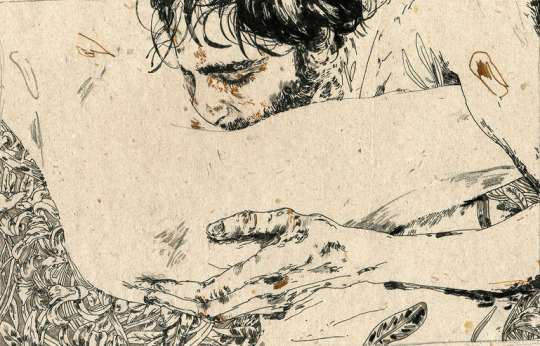#Michael Howard
Text

Michael Howard
Upside Down, 2008
#michael howard#photography#surrealism#surrealist photography#experimental photography#art#fine art photography
61 notes
·
View notes
Text
Traditional Witchcraft: Historicity and Perpetuity - An Interview with Michael Howard from Three Hands Press
#Traditional Witchcraft: Historicity and Perpetuity - An Interview with Michael Howard#Three Hands Press#Michael Howard#Religion & Magic#TradCraft#Traditional Witchcraft#Bookshelf#Tumblr Staff Has Ruined Links Now And I Hate Them For It
3 notes
·
View notes
Text
"[A theme of sacrifice can] be found in folk traditions relating to the scarecrow as the spirit of the harvest or corn king. In several English counties the scarecrow was known as a mawkin, an old dialect name for a ghost or ghoul. In Yorkshire, Warwickshire and Devon it was called a mummet or mommet meaning a spirit that walks at night. In Old Cornish a bucca can refer to a scarecrow, ghost or goblin and in northern England and Scotland it was known as a tatty-bogle. Tatty means potato and bogle is derived from bogey meaning any evil spirit or malicious faery, hence the bogeyman used to scare naughty children.
In Shakespeare's play The Merry Wives of Windsor the scarecrow is called a Jackalent or Jack of Lent. This refers to the old and rather curious custom of pelting any stranger visiting the area with sticks and stones. By the 19th century a puppet or scarecrow had replaced a human victim. It was beaten with sticks in a folk ritual to increase the fertility of the fields and ensure there was a good harvest. Originally the mawkin was the name for a bundle of rags on a stick used to clean out bakery ovens. After use it was placed in the fields to symbolically promote the growth of the grain used to bake the bread. When it was windy the rags fluttered in the breeze and were seen to scare off crows and other birds attacking the new crops.
Sometimes in the old days a man desperate for any work was hired to be a human scarecrow and stand all day in the field warding off the birds. Some folklorists trace this custom and indeed the origin of the scarecrow back to human sacrifices in pagan times to protect the crops and livestock from disease and bring a fertile harvest. In this respect it could be a more socially acceptable and civilised substitute for the divine king ritually murdered so his blood fertilised the land.
Dr Jacqueline Simpson of the Folklore Society believes the scarecrow may have originated in the ugly or aggressive effigies once placed in the fields to drive away evil spirits. She has linked them to the puppets in European folk customs that were destroyed in spring fertility rites as symbolic representations of winter and death. After the coming of Christianity, farmers in Brittany in northern France placed a life-sized wooden image of the crucified Jesus in the fields instead of these puppets, as they believed it would produce a good harvest.
Everywhere in folklore there is evidence of the association of scarecrows with the supernatural, ghosts and the spirits of the dead. In North America there was a folk belief that scarecrows came alive on the night of Hallowe'en (October 31st) and roamed the countryside. The popular American author Nathaniel Hawthorne wrote a short story based on this belief, which was common knowledge in his home village of Salem, famous for its witch-trials. In the story, which is similar to the Italian fairy tale of Pinocchio, an old witch called Mother Rigby made a scarecrow from a broomstick and used a spell and a tune played on a pipe to bring it alive."
Liber Nox:
A Traditional Witch's Gramarye
Chapter 9: 'Michaelmas'
by Michael Howard
123 notes
·
View notes
Text

Theodore Major - The Sea • Theo Major: a forgotten twentieth-century master
#theodore major#art#artist#painter#painting#the sea#british#20th century art#theo major#michael howard#artuk.org
3 notes
·
View notes
Text

I'm reading Modern Wicca by Michael Howard and while it's way better than I thought I am still shaken to my core by the revelation that Gerald Gardner was a Shorts Guy.
12 notes
·
View notes
Quote
The botanical elements in the flying ointment include a number of psychoactive plants known for both their occult symbolism and narcotic properties. Aconite is sacred to the Greek goddess of the underworld, witchcraft and sorcery, Hecate. It is said to have originated from the saliva of the three-headed dog Cerebus who guards the gates to Hades. Cinquefoil was a plant used by medieval magicians to increase the powers of communication and induce dreams. Parsley was used in scrying and was sacred to the Greek underworld goddess Persephone. Henbane was regarded in folklore as a plant of death and magically was used to evoke spirits. Mandrake is a renowned magical plant surrounded by legends and is said to increase psychic perception. Hemlock is another underworld plant with associations with death. In the lore of occult correspondences, it is ruled by Saturn, and in the medieval grimoire Key of Solomon hemlock juice is recommended to consecrate the athame or black-handled ritual knife.
Michael Howard - By Moonlight and Spirit Flight
29 notes
·
View notes
Text
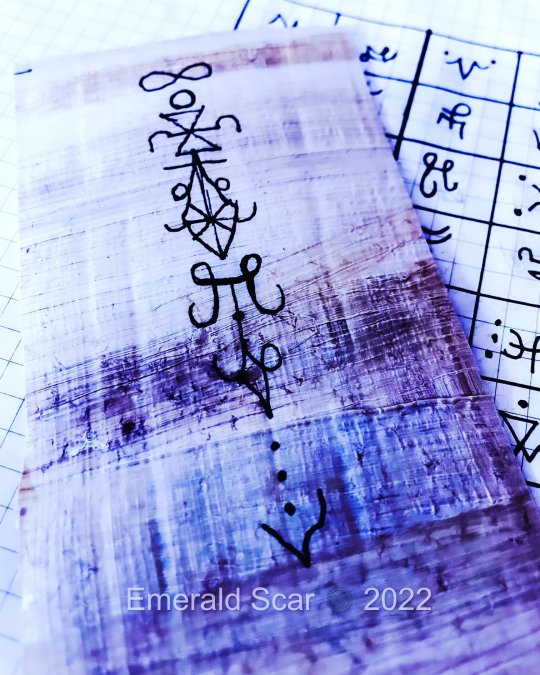
It was Christmas Season 2018, Yule time if you prefer, when I was browsing for books online one evening & I stumbled upon a title known as “The Pillars of Tubal Cain”. I was not entirely sure what to expect from the book, I ordered it on a whim, and shortly after its arrival my life would be changed forever. To shortly summarize the Pillars of Tubal Cain is a book written by Michael Howard and Nigel Jackson. To my knowledge the book is a collection of articles from Michael Howard’s “The Cauldron” magazine and website that provided a series of articles regarding traditional witchcraft running from the 1970’s until Michael Howard’s passing in 2015. The book covers many topics such as the roots of Angelic Magick, Yezidism and the Peacock Angel, Esoteric Taromancy, the Knights Templar, Solomons Temple, the Fallen Angels etc.
I post this blog to give credit to Michael Howard for providing a gateway for me into Sabbatic Craft which later on sparked my deeper interest into Arabic sorcery and their potential relationship. Michael Howard’s work sparked me greatly, I began to research everything about him, as knowing the author can sometimes teach you more than the books themselves. I started by purchasing associated titles involving Michael Howard, one of which was “The Luminous Stone” edited by him partially. It was when I opened this book that I realized Michael Howard had died in 2015. I felt this strange coldness in my chest when I read this, knowing I would never be able to speak to this man. It was then when I was lead to the work of Andrew Chumbley and the Cultus Sabbati, as for me this seemed an accessible root into Howards influences. Michael Howard had been initiated into the Sabbatic Cultus in 1999. It was not until I read Eikostos, the Xoanon Bibliography that I learned that Michael Howard was credited for "facilitating the placement of our grimoires in the hands of worthy owners." This quote is from Daniel A. Schulke, found in the forward of Eikostos.
About a few months after my reading of Pillars that I had acquired a copy of the Azoetia by Andrew Chumbley, following my digestion of Michael Howards work. At this time, I am trying to narrow down exactly how much is respectable to say of my work with this grimoire, one thing I will say is it birthed the coven and its structure which I currently oversee. The Pillars of Tubal Cain spoke of the legend of the battle in heaven between the Arch angel Michael/Mik’hail and the fallen angel Lucifer. It was said in the battle of heaven that the arch angel struck Lucifer’s brow, which lead an emerald to fall to the earth. This emerald would be proposed to be many things, or a part of many things, such as the Emerald Tablets of Thoth, and the “emerald table” of King Arthur. It was theorized this strike towards Lucifer’s brow created what is known as the Mark of Qayin, synonymous with the Third Eye, or Ajna Chakra in many witchcraft traditions around Britain especially.
So, what is the Emerald Scar? The exact same thing to me. If the emerald falls to earth from Lucifer’s brow, it creates an Emerald Scar. This legend and Michael’s work along with practice of the Azoetic arcana led me to form a small circle that would “embody the entirety of witch blood “. The concept of Via Nocturna propounded by Nigel Jackson referenced by Andrew Chumbley in Opuscula Magica Vol. 1 stuck with me greatly the more I learned about it.
It is termed as "the invisible conclave of initiates conjoined through parity of experience within trance-ecstasis, Its wisdom is accessible to those whom have passed through the transliminal gateways of this world and whom have undertaken the initiatory night-journey to the oneiric realms of the Sabbatic revelry." Within the Sabbatic conclaves of the Greater Dream, the dream beyond the dream, I glimpsed through the Emerald Jewel a series of phantasmagoric visions which lead me to believe that an initiatory path via the Golden Chain had opened for me. I want to add that the Golden Chain of initiation isn’t even a concept coined entirely by Andrew, it is very much related to the Naqshbandi Sufi order as a way of initiation via lineage. This Golden Chain is discussed as a concept in Pillars early on. I believe Andrew Chumbley understood this concept to a deep degree, considering his vast crediting towards Sufic orders in his 1995 work, Qutub. Qutub especially had an impact on my desire to find missing links between Arabic Magic and Sabbatic Craft, especially due to Chumbley's reference of many terms used in Sabbatic tradition which are directly linked to Arabic Etymology and practice, as well his reference of the Sufic sect of the Mullamatiyah, the Jhakri of Nepal, the Yezidi of Kurdistan, the Dhu'l-qarneni of medieval Morocco. Over time I had begun to form my own view of the cosmos based mostly (at least at first) on the work of the Cultus Sabbati and associates.
With the launch of the Emerald Scar website, we find it fitting to give credit to those who helped spark our inception. We have no direct affiliation with the Cultus Sabbati whatsoever, their works however were a major focal point for us.
I personally also had the pleasure of visiting Essex, Andrew’s home county in England for the Nameless Arte Conference in 2019. There I was able to meet A.D Mercer author of Liber Coronzom & Runen Wisdom of the Runes, Gemma Gary Co-owner of Troy Books & author of Traditional Witchcraft: A Cornish Book of Ways, The Devils’s Dozen, & the Charmers Psalter, last but not least Martin Duffy author of Effigy, The Devils Raiments, and the newly published Anathema Maranatha. Meeting these authors and associates of Three Hands Press provided me with a lot of inspiration to continue the workings that I was undergoing at that time. It’s been 3 years now since I first got into the works of Cultus Sabbati and its associates and I still continue this work within my chosen "Cells" of Magical Arcana. I would also like to thank James Hunter-Ralston for being a dynamic figure in my journey and helping me to meet many of authors who inspired me. Throughout the "unfoldment" of the work more credit to inspirations will be given and more exposition shall be offered into the arcanum of the Emerald Scar. We look forward to those who wish to join us at the Emerald Flame of the High Witch Sabbat.
(This blog is from our website www.emeraldscar.com , if we caught your attention please consider supporting the website.)
#azoetia#sabbatic witchcraft#gnosis#metaphysics#metaphysical#witchcraft#andrew chumbley#michael howard#daniel schulke#EmeraldScarCircle#WithinTheDream#tradition witchcraft#dreamwork
7 notes
·
View notes
Conversation
Sir Michael Howard CBE: The gallantry of inexperience made their [the U.S.] losses heavy -- over 10,000 killed or wounded -- but they learned fast; and the very presence of these tall, cheerful, well-fed boys from the Middle West with their boundless optimism convinced their weary allies that the war could not now be lost.
@grrlpup: Aw, we were the golden retriever emotional support animals of World War I!
#michael howard#the first world war#wwi#calling it the 'middle west' is so fucking bizarre to me#given how far fucking east it is#btw I'm gonna have to ferret out who/why/when started calling it the first world war#since it certainly wasn't
4 notes
·
View notes
Text




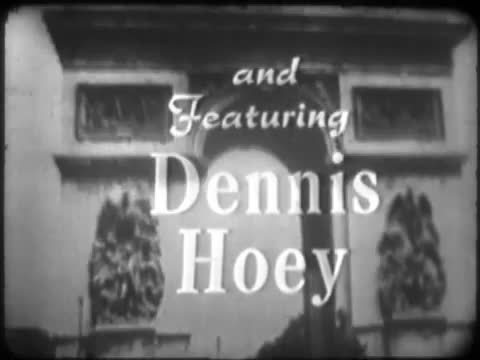
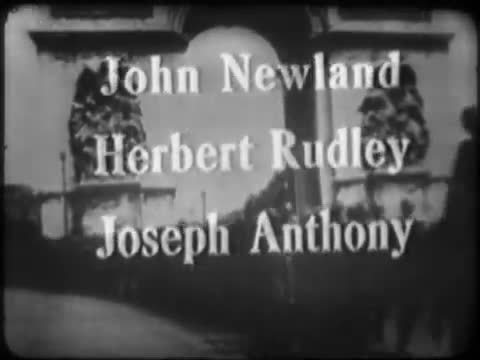


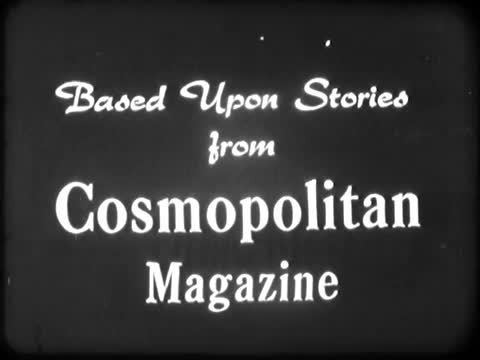




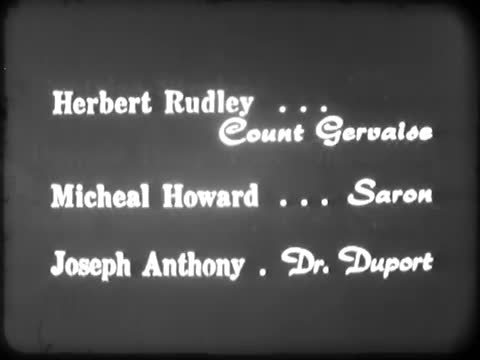

From the Golden Age of Television
Reward! One Million - DuMont - October 23, 1951
A presentation of "Cosmopolitan Theatre" Season 1 Episode 4
Drama (set during World War II in France)
Running Time: 60 minutes
Produced by Sherman Marks
Directed by David Pressman
Stars:
Beatrice Straight as Maria
Dennis Hoey as M. Abbe
John Newland as Col. Scharf
Herbert Rudley as Count Gervaise
Michael Howard as Saron
Joseph Anthony as Dr. Duport
Maurice Shrog as Marcel
Gilbert Green as Lt. Metzger
Sara Floyd as Agnes
#Reward! One Million#TV#Cosmopolitan Theater#DuMont#1951#1950's#Drama#Beatrice Straight#Dennis Hoey#John Newland#Herbert Rudley#Michael Howard#Joseph Anthony
1 note
·
View note
Text
Bridgetown, Barbados. Michael Howard prefers to hear it from the white man’s (IMF) mouth!
https://youtu.be/DYTsLBLV6Lg
youtube
To hell with the Mottley crew! Naked!!
0 notes
Photo









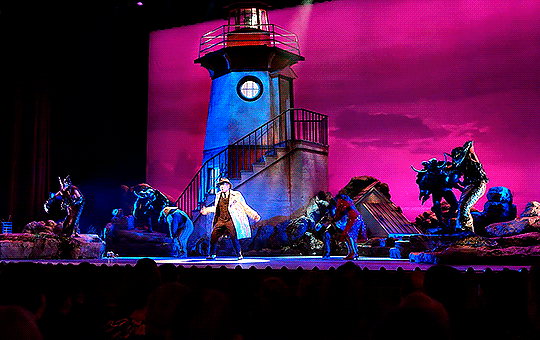
# pure oliver putnam™
ONLY MURDERS IN THE BUILDING
3.10 Opening Night
#the icon. the legend. the man with an ego so huge. the character of all time#i'd attend that show. he ate#only murders in the building#omitb#omitbedit#tvedit#usersitcom#nessa007#usersugar#tusersel#userbbelcher#dailyflicks#smallscreensource#televisiongifs#cinemapix#martin short#oliver putnam#michael cyril creighton#howard morris#mine#my gifs#idk with the colouring (howard close ups especially) i wanted the scenes to match...
1K notes
·
View notes
Text




#Called It
Euphoria / Good Omens
#Euphoria#euphoriaedit#Good Omens#goodomensedit#goedit#Euphoria Omens#Massie#Aziracrow#Ineffable Husbands#Cassie Howard#Maddy Perez#Aziraphale#Crowley#My Gif#Sydney Sweeney#Alexa Demie#Michael Sheen#David Tennant#Aged like milk but I love them all#lgbt#lgbtedit
1K notes
·
View notes
Text

"In the agricultural calendar, Michaelmas was one of the quarter days when tenant farmers paid their rent and outstanding bills were settled. It was also the day by which farm workers should have safely gathered the harvest in. In fact the full moon in September is popularly known as the 'Harvest Moon', and work in the fields went on by its light. Today harvest is often a few weeks early as farmers take advantage of any good weather in August or early September. At Harvest End or Harvest Home, various seasonal customs were observed that appear to date back to ancient rituals connected with the twin themes of fertility and sacrifice and life and death.
Prominent among these folk customs was the ritualistic cutting of the last sheaf in the harvest field. This was believed to symbolise the dwelling place of the corn spirit, who could take male, female or animal form. Sometimes the last sheaf was called the Old Woman, the Old Wife, the Old Witch, the Old Hag, the Queen, the Maiden, The Old Sow, the Mare, the Bitch, the Hare, the Goat or the Gander. These were either forms of the bright and dark goddess or the totem animals sacred to her. In Scottish folk tradition two 'corn dollies' were made from the last sheaf and called the Cailleach and the Maiden, representing the aspects of the Goddess in transition at this time of the year. In the Highlands the last sheaf was known as the Maiden before Samhain (November 1st) and the Cailleach after that date, when the dark half of the year began.
In Ireland the ancient god ruling the period from Lammas to Samhain and the harvest was Crom Cruach or Crom Dubh ('the bloody dark' or 'black bent one' or 'crooked one of the [burial] mound'). He was an underworld deity who was supposed to have invented the plough, and his myth may date back to Neolithic times. He was depicted carrying the Kern Baby (the last sheaf) on his hunched back, and was accompanied by two large black hounds. On Lammas this dark god fought a ritual combat with the god of light, Lugh, who gave his name to the festival of Lughnasadh. Crom owned a huge pet bull that was a danger to the harvest, and the supernatural beast had to be killed by Lugh's magical spear before the crops could be safely gathered in.
Offerings of first-born humans and animals, milk and grain were made to stone images of Crom on Samhain Eve (October 31st). It is claimed that St Patrick destroyed one of these idols that was being worshipped by pagans, with a blow from his crosier. When the demon inhabiting the stone left, the saint consigned him to perpetual punishment in Hell. In this story Patrick seems to have taken over the former role of the god Lugh in banishing the dark god Crom to the underworld. In 1921 an image believed to represent this harvest deity was excavated near a prehistoric stone circle in County Cavan, southern Ireland.
It was lucky for a young woman to be responsible for accompanying the last sheaf back to the farmhouse, and she was called the Lady or Queen of the Harvest. In the late 16th century a pageant was presented to Queen Elizabeth I featuring a wooden effigy of the Roman corn the last sheaf arrived back at the farm it was woven into a corn dolly and dressed in female clothing with ribbons and wild flowers. This effigy would be hung up over the hearth until Plough Monday. Then it was taken down and buried in the first furrow of a newly ploughed field as a fertility charm. Alternatively it was kept above the fire until the next harvest and replaced with a new one.
The male farm worker chosen to cut down the last sheaf was given the title of Lord of the Harvest. On English farms this custom was known as 'Crying the Neck', when the reapers threw their sickles at the last sheaf. It was considered unlucky to be the one who actually cut the sheaf down. Sometimes the man who was responsible was violently jostled by his fellow workers or had corn stalks thrown at him. There was also a tradition that if the 'neck' was cut by an older man, a younger farm worker would seize it from his hands and run back to the farmhouse with his trophy.
Once the last sheaf had been cut and the crops safely gathered in, a Harvest Supper was arranged by the farmer and his wife for the workers. If all had gone well this was a sumptuous feast where jointsof roast beef, sides of bacon, chicken, goose, cheese, home-made bread, plum pudding and ginger cake were washed down with large quantities of home-brewed cider and beer. On the Scottish island of Orkney the Harvest Supper featured the slaughter, cooking on a spit over an open fire and eating of a whole sheep, in a custom that is believed to date back to Viking times. The supper was presided over by the Lord and Lady of the Harvest and, in a reversal of the normal social rules and norms, the man was regarded as her consort and took a secondary role in the proceedings. After everyone had eaten their fill there was country dancing accompanied by music from a fiddle and the bagpipes."
—
Liber Nox:
A Traditional Witch's Gramarye
Chapter 9: 'Michaelmas'
by Michael Howard
70 notes
·
View notes
Text
At what stage will this challenge get dealt with?
At what stage will this challenge get dealt with?
Back in April last year Johnny Mercer is claimed to have told the Conservative Chief Whip that he intended to resign and he was dismissed by Boris Johnson. His comment which appears here was collected by a series of newspapers. Late yesterday a chap called Jeff Stone @JeffSto40037019 published this image with his statement “This speaks for itself. Please retweet so the whole world can see what…

View On WordPress
#Bernie Mayall#Boris Johnson#Caroline Lucas#Ed Davey#Jeff Stone#Johnny Mercer#Michael Howard#Oliver Dowden#Stephen Farry
0 notes

